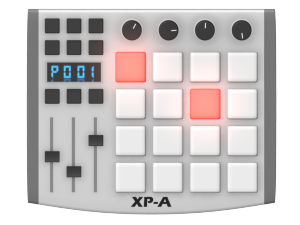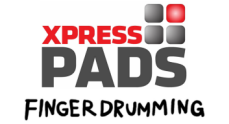For those who are completely new to the world of digital music-making, virtual drum modules (VDM), drum programming, or finger drumming: the typical pad controller is a notebook-sized hardware device with sixteen (4 x 4) rubber pads arranged on its flat surface. The pads are touch-intensity sensors that are designed to be struck by the fingers at different velocities. The electronics inside the pad controller convert these hits into MIDI data which contains note and velocity information but does not contain any kind of audio information such as drum sound, bit depth, sample rate, or frequency.

Via a MIDI- or USB-cable, this MIDI data is transmitted to a device that can turn the data into sounds, record the data, or otherwise process it. In almost all modern music application setups, this device is a PC or Mac with DAW software installed on it. A DAW can integrate software used to generate or process audio or MIDI data, as well as connect to music hardware other than the pad controller, and communicate with those components in the MIDI language, audio, and other formats. A virtual drum module can be “plugged” into the DAW. This software module converts the MIDI data that was initially generated by the pad controller into audible drum sounds. In the case of virtual drum modules, drum sounds are usually multi-velocity-layered samples that have been produced and assembled in professional environments and professionally engineered.
Via an audio interface, the drum sounds become audible when connected to speakers or headphones. All of the data processing which occurs between the hitting of a pad and when the drum sounds leave the speakers happens within a time span that is so short that the human brain perceives it as “real-time.”
Hardware drum machines and pad controllers
Pad controllers are derived from hardware drum machines (or drum computers). The most important of these is probably the AKAI™ MPC product series, which already has a long history. Those MPCs might not look very different from pad controllers, but they are. They have an integrated sound module and integrated processing and sound manipulation functions. With these machines, no additional hardware and software are necessary to process the generated MIDI data. It all happens right in the drum machine.
Technically, the XpressPads technique also applies to those hardware drum machines, although processing the MIDI data in a DAW with plugged-in VDM might offer a different range of possibilities and functions.
